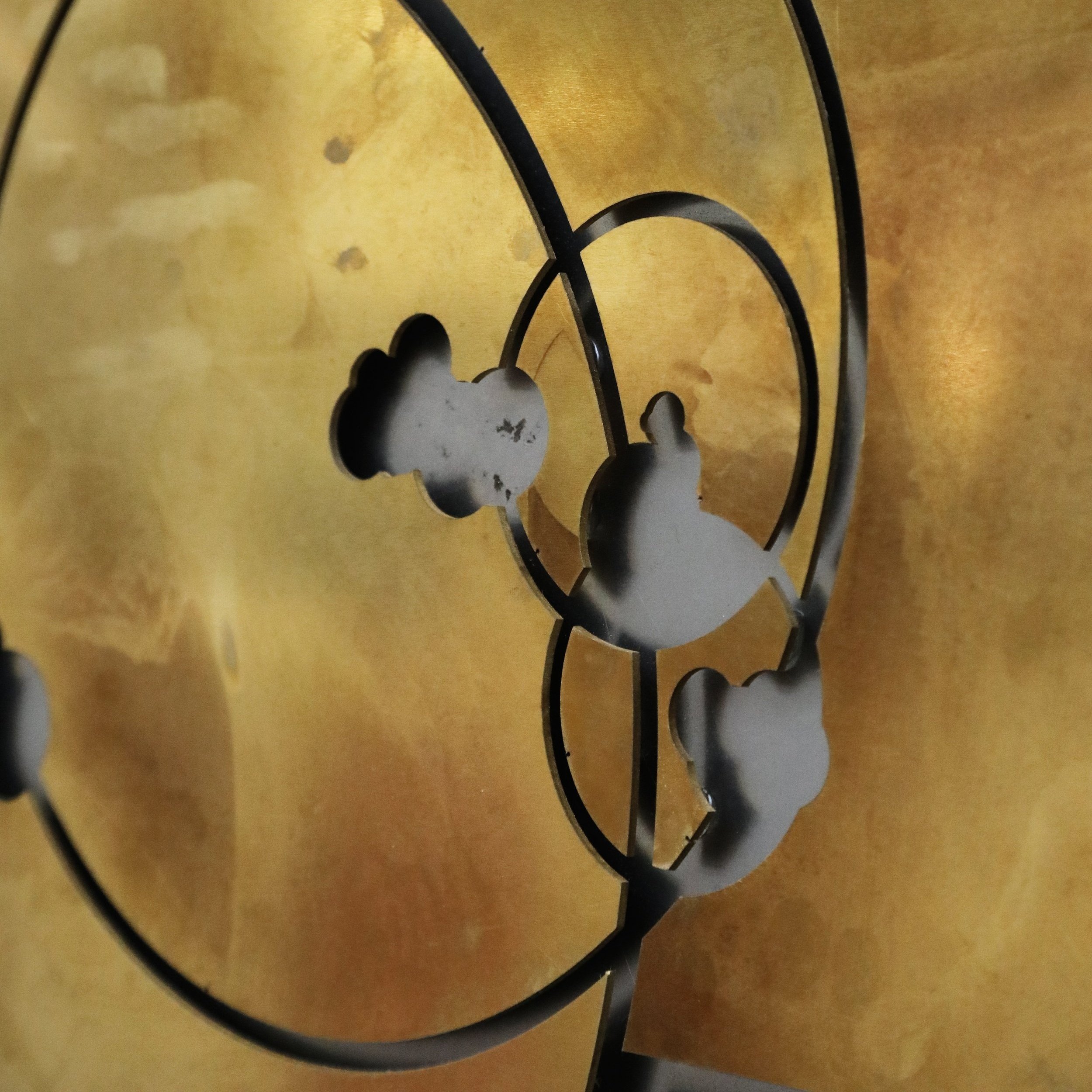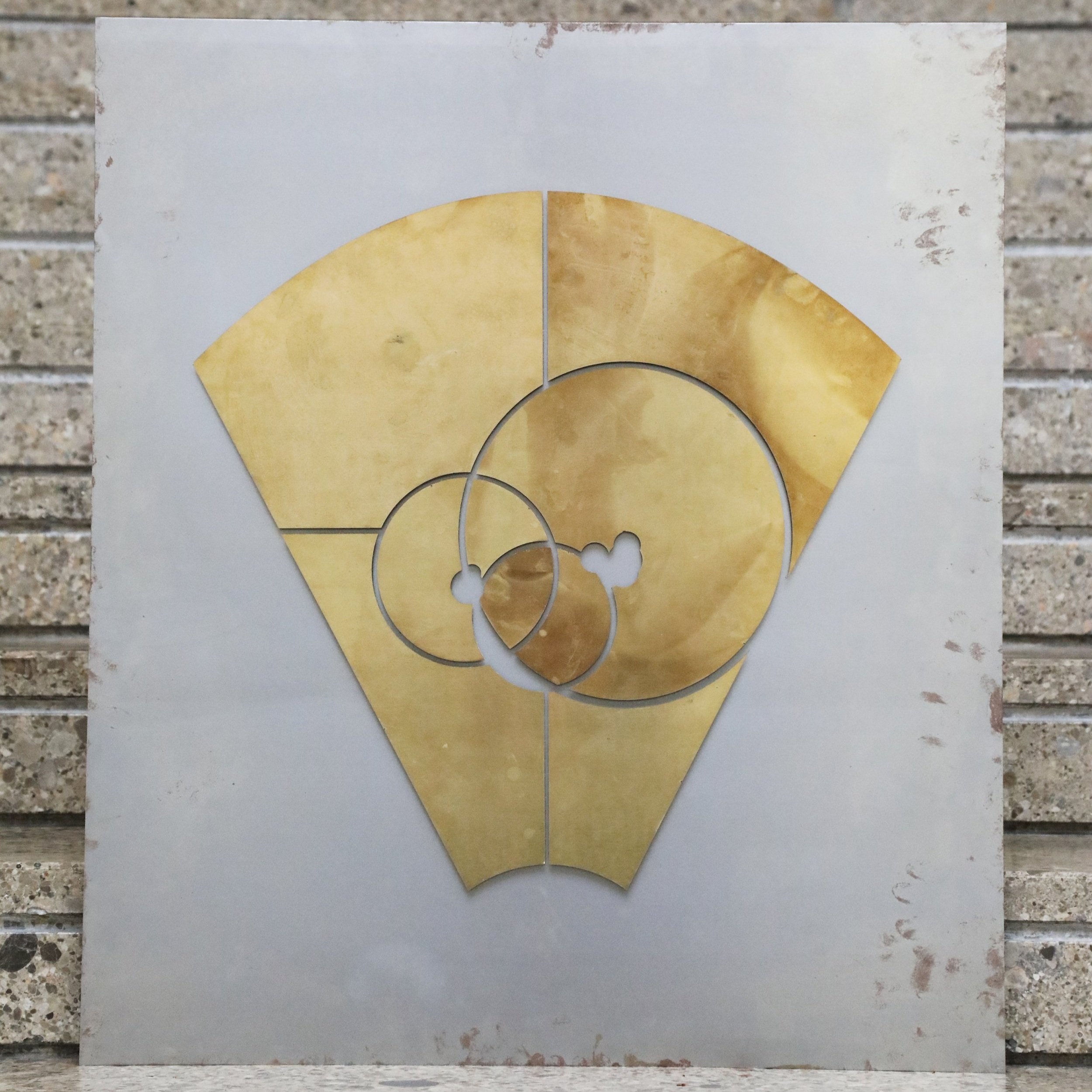Bucky's Bodies
Bucky’s Bodies
above images by Konrad Limbek
Bucky's Bodies 1 - 6
2017 - 2023
Touched uncoated steel and brass
70 x 80 cm
This series of six brass and steel works is a product of an early collaboration with astronomer Maret Einasto and her team, who in 2016 discovered the BOSS Great Wall — a supercluster complex of multiple galaxy clusters located about 5 billion light-years from Earth. The supercluster is one of the largest cosmic structures in the observable universe. If one were to point to it in the sky, it would be behind Orion’s Belt.
Drawn from the team’s astronomical data, each work is a map of a slice of the whole of the wall, illuminating the ways that clusters of galaxies affect each other from vast distances. They evoke the patterns of the cosmic web, the largest structure known to humans that traces all matter in the Universe and manifests the scaffolding of our existence, our growth, and our conclusion. The circles on the maps represent the spheres of gravitational hold from the brightest galaxies to their closest neighbors, rather than the galaxies themselves. The celestial bodies, constantly in motion, are held together by the effects of dark matter, moving towards and away from each other in a complex choreography as they sail through incomprehensible distances and timespans.
Particles are entangled, separated, and dancing with each other in perfect synchronicity from light-years away.
We, our human bodies, are 99.9% empty space and made from the very same elements as are birthed in stars. How does the landscape of the Universe affect the shape of our lives and how much do the practices of our small existence interfere with the entirety of the cosmos?
Made from uncoated steel and brass, the pieces, over time, will patina where touched by human hands and elemental phenomena.
These pieces are inspired by the extremely large, the “invisible”, and by Buckminster Fuller’s concept of Precession, as taught to me by my uncle Bill Allen: A bee bobs its’ way over a field of wildflowers, stopping every once in a while to drop onto a flower, collecting nectar to feed itself and its hive. At the same time, the bee is bathed in rich pollen, and as it alights from flower to flower, it cross-pollinates the many flowers in the field. The goal of the bee is to feed itself, meanwhile, it is inadvertently contributing to a healthy ecosystem, and life on this earth as we know it.






















